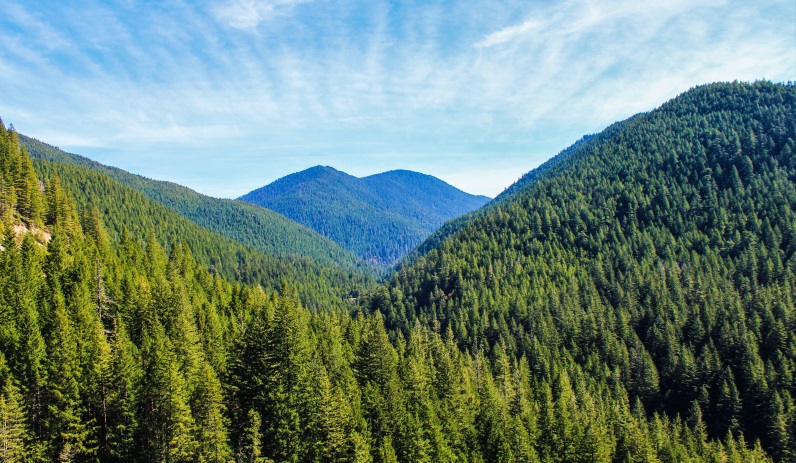I moved to Jawbone Flats in March with the understanding that I would spend the spring season developing skills as an environmental educator. What I did not realize at the time was how many mysteries the forest held, and that I would quickly come to consider my role in the forest to be that of a detective. Opal Creek Wilderness is an old growth forest that is rich not only in natural history, but also in the cultural history that tells the relationship humans have had with the land.
A recurring theme that is brought up with our students is that of human impact, and the ways in which our impact can outlive us. A prime example is a dynamited rock wall that runs beside the half-bridges on the hike to Jawbone. While that was over eighty years ago, the disturbance is clear. We stop to show students the spots along the wall where dynamite was used, and that in all the subsequent decades hardly anything has had time to grow back besides the moss that fills the cracks made by the explosives. This clue was one of the first sights that tipped me off to the myriad mysteries around me. While hiking with friends on a day off, we poked around some of the abandoned mines in the area and observed how fresh the rockslides surrounding them appear. As we made our way back to camp, my friend stopped along the Battle Ax trail and commented, “something looks different here”. Sure enough, the sloped landscape seemed bare compared to the surrounding old growth, and suddenly we realized we were walking by a graveyard of ancient trees. The hillside was covered with enormous stumps I had never paid any attention to, and we surmised that they may have been cut around the time the town was built in 1929.
The influence of humans also helped me understand the concept of forest succession, something I had never come across in my studies. While we often think of animals or plants as competing, the trees in our forest take turns dominating the canopy based on sunlight and their preference for light or shade. We take students out to study the diversity of trees in kind and shape, finding ourselves drawn to the Douglas Firs that tower above us and have dominated the canopy for centuries. As the canopy gets crowded and more dense, other shade-loving species (such as the Pacific Yew and Western Hemlock) start to take over the site. The acres on which Jawbone Flats was built is in the early stages of succession. I spent many afternoons sitting on my porch, gazing at the multitude of Douglas Firs that surround all of the staff cabins. They were some of the first trees to grow after the land was cleared for camp, and at first sight appear to be the sole tree species around the cabins. However, I started to notice newcomers around me which were enjoying the shade the Douglas Firs were providing. I gazed at a slow-growing Pacific Yew beside my cabin, proud of it for growing amidst such disturbance.
I hope to come back to Jawbone Flats and the wilderness for many years to come. I’d like to watch that Yew grow, though I know the scale of time needed to watch the succession change is far larger than the life I have. Luckily, the forest is in constant flux and there are many pieces to the puzzle to explore and ponder over. Stopping to ask ourselves questions is, after all, how many naturalists made ground-breaking discoveries. These past few months have inspired me to seek out unsolved mysteries in all ecosystems while I stumble upon clues and hold a sense of wonder deep within me.


